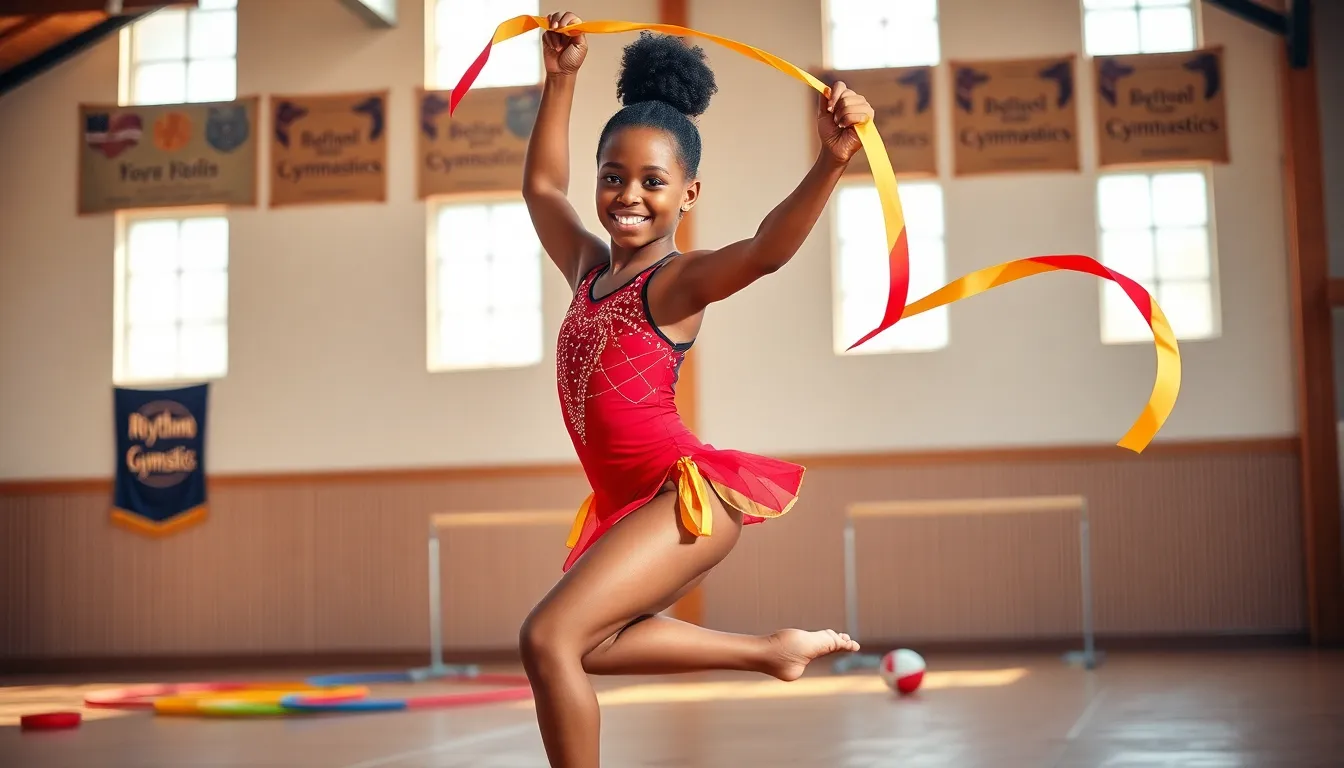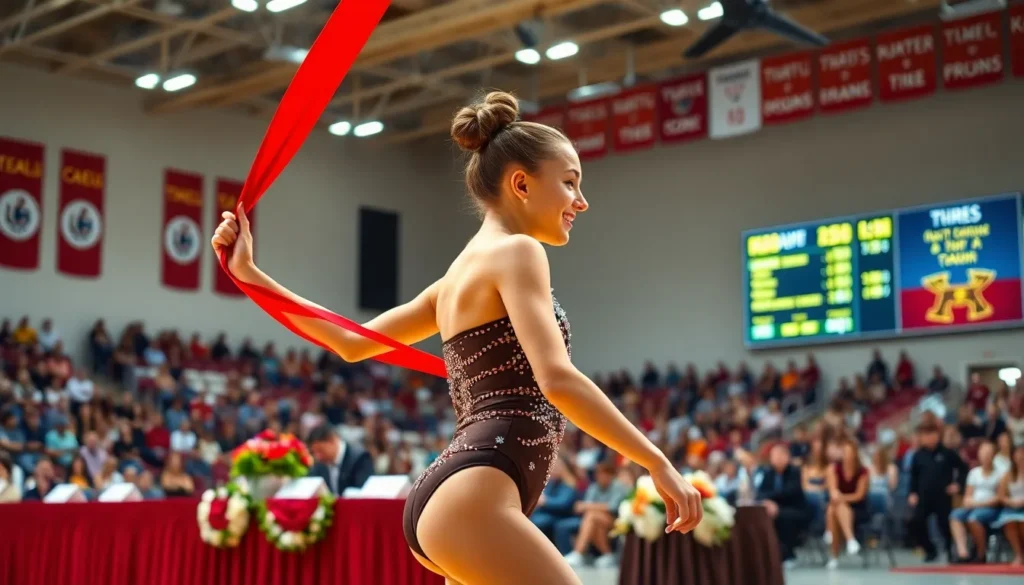Rhythmic gymnastics is a mesmerizing blend of dance, gymnastics, and manipulation of apparatus. With its unique combination of grace and athleticism, this artistic sport has captivated audiences worldwide. As it gains momentum on the global stage, interest in the latest trends, athletes, and competitions thrives. This article delves into the current landscape of rhythmic gymnastics, exploring its history, techniques, rising stars, and its future prospects.
Table of Contents
ToggleOverview of Rhythmic Gymnastics

Rhythmic gymnastics, distinct from other gymnastics disciplines, emphasizes flexibility, coordination, and artistry. It originated in the early 20th century, gaining formal recognition in the 1960s. Athletes perform routines with handheld apparatus such as ribbons, hoops, balls, clubs, and ropes while embodying a seamless fusion of movement and music.
Historical Background
The sport emerged from the traditions of ballet and the fitness movements of the early 1900s. Initially, rhythmic gymnastics was associated with physical education in schools across Europe. By the 1960s, it evolved into a competitive sport, recognized by the International Gymnastics Federation (FIG) in 1963. The discipline became an Olympic sport in 1984, solidifying its presence on the international sports scene. Over the years, rhythmic gymnastics has developed its scoring criteria, emphasizing artistry and technical skills.
Current Trends in Rhythmic Gymnastics
As rhythmic gymnastics evolves, new trends emerge, influenced by both style and substance.
Popular Competitions and Events
Key events such as the World Championships, European Championships, and the Olympic Games showcase top-tier talent. These competitions highlight national federations, bringing a spotlight to rhythmic gymnastics. Plus to traditional competitions, creative formats like team events and mixed competitions are gaining traction, increasing viewer engagement.
Notable Athletes in the Sport
Athletes such as Dina Averina and Aleksandra Soldatova have embraced the spotlight, showcasing extraordinary talent and leading their teams to impressive victories. Groundbreaking performances, iconic routines, and unique styles distinguish these gymnasts. Their proficiency not only garners accolades but also inspires the next generation.
Techniques and Elements of Rhythmic Gymnastics
Mastering rhythmic gymnastics necessitates rigorous training and a comprehensive understanding of various techniques.
Equipment Used
Athletes use several pieces of equipment, ribbons, hoops, balls, clubs, and ropes, each requiring distinct skills. The choice of apparatus largely influences the routine’s choreography, influencing not only the difficulty but also the artistic expression.
Scoring and Judging Criteria
Scoring in rhythmic gymnastics is multifaceted, combining artistry and execution. Judges assess elements like difficulty, execution, and overall composition, with an intricate point system that rewards both technical precision and creativity. Familiarity with these criteria is crucial for gymnasts aiming for excellence, as it directly impacts their performance.
Future of Rhythmic Gymnastics
As rhythmic gymnastics continues to evolve, it witnesses the emergence of fresh talents eager to leave their mark.
Emerging Talents
Young gymnasts across the globe have begun to rise through the ranks, showcasing outstanding creativity and skill. New programs and training methods enhance their abilities, pushing the boundaries of the sport and promising an exciting future. These emerging athletes not only display technical prowess but also introduce innovative choreography, keeping the sport dynamic.
Global Growth and Popularity
Rhythmic gymnastics is experiencing notable global growth. Countries such as Bulgaria, Russia, and Spain have historically excelled, but emerging nations are also establishing themselves on the international scene.
As more countries invest in rhythmic gymnastics programs, the talent pool diversifies and the sport improves in quality. Social media platforms amplify this growth, allowing athletes to showcase their routines and gain followers, expanding interest beyond traditional sports audiences. Major sponsorships and television deals are increasingly common, signaling robust commercial potential and paving the way for rhythmic gymnastics to reach new heights.
Conclusion
Rhythmic gymnastics stands at an exciting crossroads, blending tradition with innovation. As the sport evolves, fresh talent and evolving trends promise a bright future. With continuing global interest, rhythmic gymnastics will likely remain a captivating spectacle for years to come, constantly pushing the boundaries of artistry and athleticism.








